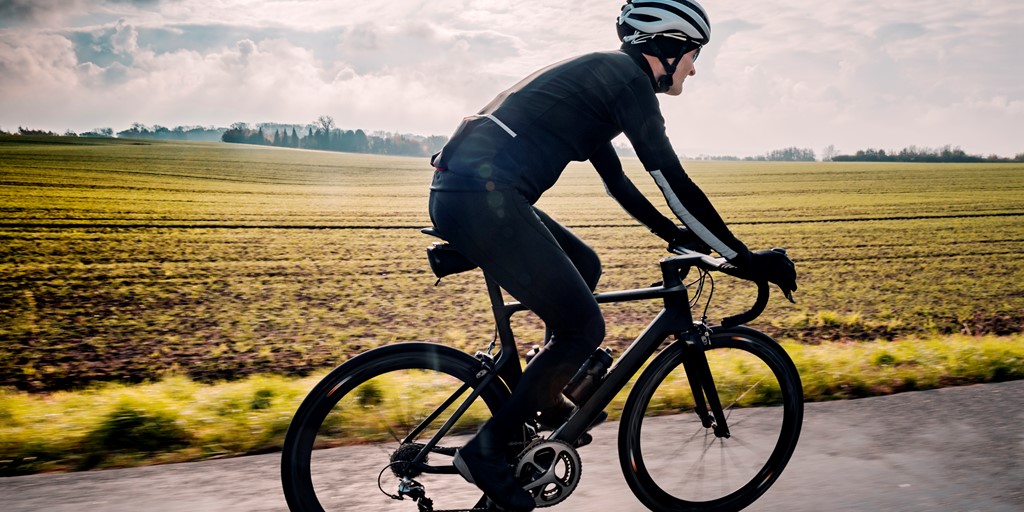How To Get Better At Road Cycling In 8 Simple Steps

The days are getting longer, the air is warmer and travel to many countries is still a no-go – but going further on your road bike is the ultimate solution to any pandemic-induced cabin fever or stress.
Daniel Allport, a keen cyclist and manager of the online bike retailer Southern Distributors, has put together eight tips to help you ride better with every journey.
Table of contents
Adjust your cycling posture
Ride with other people
Check your tyres
Use your drop bars
Maximise comfort
Wear specialised cycling gear
Prioritise consistency over distance
Stay motivated
Adjust your cycling posture
As a road cyclist, you have the unique ability to alter your aerodynamics simply by moving your body. Therefore, your posture is key.
Ideally, you want to have your body in as low a position as possible rather than sit up straight and catch the wind. We appreciate that it’s easier ‘read’ than done, but try lowering your body close to the bars by bending and tucking in your elbows. Doing this will help you stay relaxed and balanced in the saddle and reduce your risk of injury.
Ride with other people
In Formula 1, a driver will trail the car in front as close as possible before overtaking to use their car as a windbreak, thus reducing resistance on their vehicle. You should apply the same principle when cycling as part of a group – taking turns to swap the lead will help you cycle more efficiently.
Cycling in a group is also safer, faster, and more social than cycling solo.
Although cycling with someone more experienced or stronger than you may seem daunting at first, it’ll push you to become better.
Check your tyres
Fully inflated tyres will roll better – it’s as simple as that. That’s why you should check your tyre pressure before every ride, especially if you’re going on long-distance rides. Changes in air temperature while your bike is stored overnight is enough to deflate them, so this step is essential.
I’d recommend investing in two types of bike pump – a track pump for at home and a mini-pump to take on the road. And don’t forget to check your tyre’s sidewall to establish the correct pressure needed.
Use your drop bars
Ask yourself how often you actually use your drop bars. From my perspective, I’d be clutching at straws if I said I use them 30% of the time. But using drop bars can reduce your wind resistance by up to a whopping 20%, so imagine how much that stacks up when you’re on a long ride.
Practise your drop bar position before your ride.
If you find using the drop bars uncomfortable, try readjusting your seat and handlebar height to suit. Fitting some back and shoulder stretches in before a ride can also make all the difference.
Maximise comfort
A comfortable ride is a faster ride. Although aches and pains are inevitable – and let’s face it, we cyclists love a good moan – having a professional bike fit is essential. Your bike needs to fit you, not the other way around.
Reducing those aches and pains and maximising ride comfort can be done by employing a thorough stretching routine – this will help you maintain good cycling posture.
Consider some of the following options to condition your body for cycling:
Pilates – to strengthen the muscles which support your body weight
Core exercises – these are just a quick YouTube search away
Stretching – before, after, and especially during your break
Wear specialised cycling gear
Being comfortable in your cycling clothes can make a measurable difference to your cycling endurance and speed.
Here are a few affordable garments that you’ll find hugely beneficial:
Cycling shorts
If you’re planning on cycling for longer than an hour, I’d seriously consider buying a pair of durable cycling shorts.
I’d advise that you spend at least £40 on a good pair of shorts, and you should wear them without underwear if you’re happy to do so – there are several reasons for this.
Chamois linings tend to offer better comfort than synthetic linings, but they’ll both offer a lot of comfort during your ride.
Cycling glasses
There’s often a debate amongst cyclists over whether glasses should come first over shorts. Once you’ve had a large insect hit the centre of your eye while riding at over 30mph, you’ll realise the importance of owning cycling glasses.
My two recommendations for cycling glasses are:
Don’t go cheap – they’ll break on the road or in your pannier, and you’ll end up spending more money on more pairs.
Get interchangeable lenses – or if you’re feeling really fancy, photochromic lenses will automatically adjust to the sunlight and conditions around you, which is incredibly cool and convenient on longer rides.
A base layer
You might assume this is a given in the winter, but you can actually wear a base layer all year round. Why? Because of the heat distribution.
Much like a wetsuit, a base layer is designed to keep you warm when you’re cold and help you cool down when you’re feeling too hot.
The best part is that you won’t need to spend more than £20 on a decent long sleeve base layer that’ll last for years. Base layers also combine well with cycling jerseys and will prevent your jersey from becoming drenched in sweat by the end of your ride.
Cycling jerseys
Although not as essential as the items listed above, cycling jerseys still have an array of benefits. In a nutshell, they’ll help you stay dry, cool, and comfortable – no matter how long you ride.
Finding the right fit for you is essential. You can choose from three types of fit – aero, regular, and comfort. I prefer comfort, but any long-distance cyclist would most likely prefer aero for better speed.
You want a jersey with large rear pockets for food, energy bars, and other useful items. Make sure it has a zip too, or it’s goodbye mobile phone on a sharp bend! You’ll cycle more confidently with zip pockets on your jersey, I guarantee it.
Prioritise consistency over distance
If you’re running or weightlifting, you need to train consistently throughout the week to get results – and the same principle applies to road cycling.
There are many ways you can integrate cycling into your week, such as:
Cycling to the shops – you’ll be surprised how much shopping can fit in a basket and rear panniers.
Cycling to work – this is probably the single best way to improve your road cycling. It exposes you to every kind of danger distraction you might experience on longer rides. If you work from home, fitting a cycle in before you hit the kitchen table desk will help you concentrate much more.
Cycling to social gatherings – it doesn’t need to be a sweaty affair, you just need to keep your bike in an easier gear and give yourself plenty of time. I’ll even take a five-minute breather to keep my core temperature down.
Stay motivated
This is my final but arguably most important tip. Remember, it’s okay to have an off-day, to take the train instead of cycling, or to have a day indoors when the weather is gloomy. However, to stay motivated, I recommend the below tried and tested methods.
Set weekly distance targets
Some of us love Mondays, some of us hate them. Either way, setting a weekly cycling distance target, rather than daily, allows you to cycle more when you feel great – it’s that simple.
The UK weather, as we know, can be very unpredictable, and I love knowing I can take an early turn home on a damp day if I’ve cycled further earlier in the week in the beautiful sunshine. You’ll also notice commutes take up a great deal of that target without you realising.
Set up a cycling group
There’s no need for branding and big communication setups – a shared Google calendar and group chat will do the trick. By scheduling regular rides with others, you’ll get the motivation from your fellow cyclists when you need it most.
Have rest days
But question whether your cause is a mental or a physical one. If it’s mental, you can probably push yourself out there, but muscles need time to heal and build. I tend to schedule one rest day every week where I don’t cycle at all – it keeps me excited and allows me to prioritise other tasks.
I hope these eight steps will allow you to reach your personal best when road cycling. Go further, cycle happier and enjoy!
Many thanks to Daniel for his insights.
Specialist cycling insurance from Cycleplan
If you’re a serious road cyclist, you need specialist insurance to protect yourself and your bike.
Our specialist cycling insurance will cover you if you sustain a serious injury from cycling, while your bike and accessories will be covered against damage, theft, and loss.
Click the link above to find out more about our cycling insurance, or get an instant online quote and see what we can do for you.







